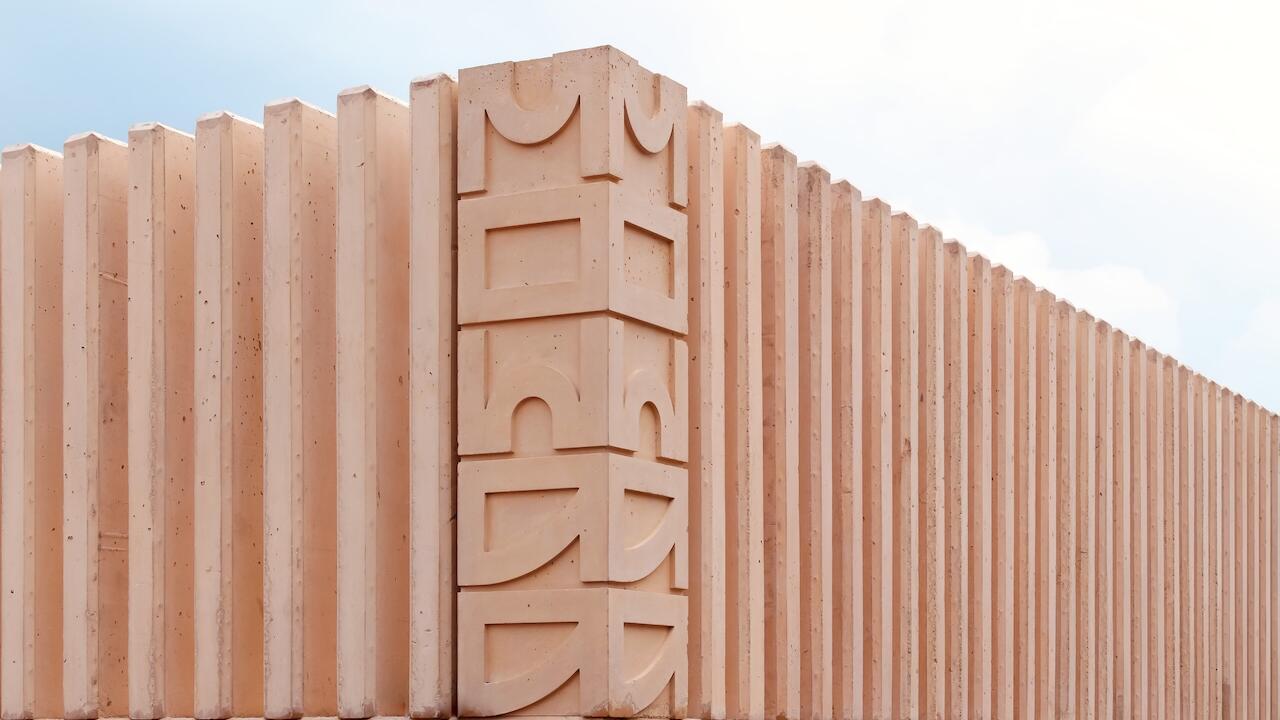Erika Verzutti
Galerie Peter Kilchmann
Galerie Peter Kilchmann

Erika Verzutti’s sculptures and relief works, placed sparingly throughout her exhibition Painted Ladies, had a poised solidity. Most pieces were casts in bronze or concrete and subsequently painted – made from the sometimes clay originals into which Verzutti had worked with her fingers. Some casts were of fruit or other found objects. The majority were wall-mounted or freestanding, about a metre in height: neither fragile nor overbearing.
Verzutti’s modesty of scale, colour and medium allows her to quote without investing too heavily in what she cites. Antenna (all works 2014) was the tallest work in the show: a 1.9 metre-high column of knobbly, vertically stacked jackfruits. The fruits retained their natural profile from one viewpoint but – due to incisions in each – took on an irregular Brâncusi-like geometry. Here were nods to both famous strands of Brazilian modernism: angular neo-Concretism and organic Tropicália. The Brazilian artist seemed aware of the expectation that, for an international audience, she would reference her famous predecessors, yet she is not beholden to them. Less lofty influences are equally relevant: included was a continuation of Verzutti’s series of pastry-inspired works, such as Pie, a large concrete tart with a beeswax curd filling and polyurethane meringue. In Cemetery, her latest iteration of grave formations, eight large granite cobbles were grouped together on the floor in a rough square, scraps of clay and paper dropped seemingly randomly upon them.
The exhibition’s urgency lay in Verzutti’s take on gender constructions. Gravid, for example: a rectangular bronze relief in which two hollows have been formed – furrowed above but smooth below. Lodged in the lower cavity was a concrete cast of a watermelon streaked with overdone naturalistic hues including a florid cadmium. It was at once a glorification of the fruit yet also sarcastically ambivalent – Dorothy Cross’s works in cowhide and udders of the 1990s came to mind. Like Cross, Verzutti is happy to push her sculpture to both humorous and disconcerting effects.
The exhibition’s titular work, The Painted Lady, stood in a cluster with Cemetery and the stick-like Grandfather. Upright and akin to a gravestone, The Painted Lady consisted of a curved, abstract female figure rising from a triangular base. One breast was depicted as a flat circle, the other a bulbous pomegranate with a protruding calyx nipple. Made of papier mâché and wax with touches of blue and yellow acrylic on the edges, the work had a prop-like ethereality compared with other pieces here: a small hole on the back revealed its hollow structure. The title might celebrate the eponymous butterfly but with its extravagant botanic symbolism it seemed also to protest its use as a derogatory label. Verzutti does not commit herself to either reading; in this and all her works in the show, equivocation allowed her expressive leverage. She can thus tail-gate sculptural traditions to speak of life and death, acknowledging not just biological essences but their complicated realities.













